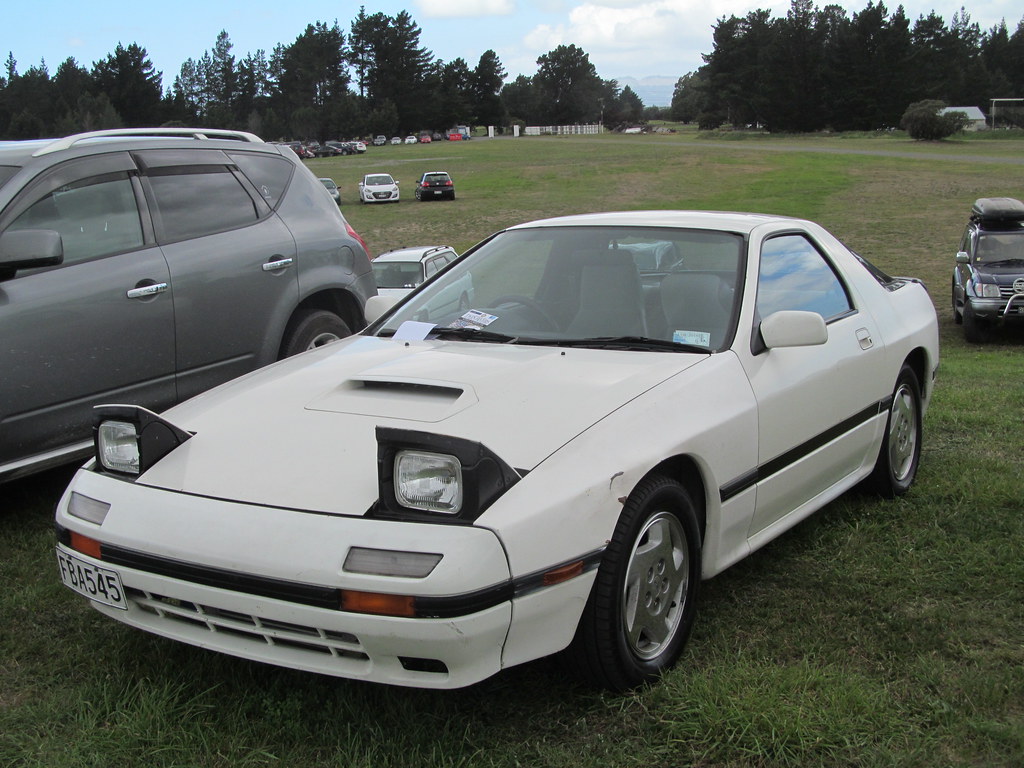
In the complex world of automotive travel, certain vehicles, through a combination of design characteristics, driver behavior patterns, or even historical controversies, have earned reputations that make them veritable ‘headaches on wheels.’ This phenomenon isn’t solely about individual driving skill; rather, it often involves a confluence of factors that shape public perception and, in some cases, present tangible risks to road users.
For consumers seeking to make informed decisions about their next vehicle or simply to navigate the roads with greater awareness, understanding these underlying dynamics is crucial. We delve into a fascinating array of vehicles that have garnered notoriety, drawing insights from both extensive anecdotal reports shared by experienced drivers and rigorous data from comprehensive studies. Our aim is to provide an objective, data-driven perspective, much like the trusted analysis found in consumer reports, enabling a clearer understanding of the practical implications these reputations hold.
From the statistically confirmed high incident rates associated with certain brands to historical design flaws that left an indelible mark on automotive safety, this in-depth exploration will shed light on what makes these vehicles stand out – often for reasons drivers would prefer to avoid. We examine the specific attributes and historical narratives that have cemented their places in the minds of motorists, helping to demystify why some cars, and their drivers, seem to attract more attention than others.

1. Tesla: High-Tech, High-Incident Drivers
A recent study has positioned Tesla drivers at the very top of the list for driving incidents, marking them as the group statistically most prone to mishaps on the road. This quantitative finding, sourced from LendingTree’s QuoteWizard data covering tens of millions of quote inquiries, reported a significant ‘36.94 incidents per 1,000 drivers’ for Tesla, solidifying its number one ranking. The brand also notably ranked as having the worst drivers in nine states, a slight improvement from eleven states in the previous year, yet still a concerning figure for any motorist.
This statistical prominence is often corroborated by anecdotal observations from seasoned drivers, many of whom describe interactions with Tesla owners as uniquely challenging. One frequently cited characteristic of Tesla drivers’ behavior is a notable lack of smoothness behind the wheel. Observers note a ‘twitchy and nervous’ driving style, often characterized by abrupt movements and inconsistent speeds. This is compounded by the regenerative braking systems common in electric vehicles, which, while efficient, can lead to sudden deceleration ‘when the conditions don’t dictate doing that,’ creating unexpected slowdowns and potential hazards for following traffic.
The paradox lies in the fact that despite the rapid acceleration capabilities of EVs, many owners appear ‘scared to drive up to speed in a quicker motion,’ failing to leverage the vehicle’s full performance potential like breaking later or accelerating sooner. Beyond driving dynamics, navigational competency frequently arises as a point of concern. Many Tesla drivers, and to a lesser extent, general motorists, ‘seem to not know where they’re going…ever,’ despite advanced in-car technology and ‘unfettered access to freakin satellites.’ This often manifests in hazardous on-road behavior, such as ‘slowing down on a main road to a crawl, no signal or warnings, and slowly cut across lanes to get to the right one,’ only to discover it was the wrong lane. Such indecision and lack of signaling directly contribute to traffic disruptions and accident risks, feeding into the brand’s overall high incident rate.
While the study primarily focuses on driving incidents, the broader brand narrative also suggests potential ‘headaches’ for consumers. For instance, the Tesla Cybertruck, despite its futuristic appeal, has faced significant scrutiny for ‘many software bugs and safety concerns laid out,’ alongside ‘expensive repairs and delayed production.’ This indicates that for some consumers, choosing a Tesla might extend the ‘headache’ beyond just driver behavior into the ownership experience, raising questions about overall product maturity and reliability even in its cutting-edge offerings.

2. Ram Trucks: The Aggressive Road Presence
Ram trucks secure a prominent second place in the LendingTree study for worst drivers, with an incident rate of ‘33.92 incidents per 1,000 drivers.’ This positions Ram drivers as having the highest number of incidents in an impressive sixteen states, particularly noting a peak in New Jersey. This data strongly aligns with common anecdotal observations from other road users who frequently associate Ram trucks with an aggressive driving style.
Reader comments highlight a consistent pattern of behavior attributed to Ram truck drivers, including ‘weaving in and out of traffic, tailgating, and otherwise creating mischief.’ This perception of aggressive maneuvering extends beyond mere impatience, with some drivers noting a ‘dickish behavior’ that seems to be exacerbated by the truck’s height. The elevated seating position in a pickup truck, for instance, can lead to newer, brighter headlights shining directly into the rearview mirror of lower cars, creating discomfort and an impression of being ‘too fck’n close’ when a truck is tailgating.
This blend of statistical evidence and widespread anecdotal reports paints a clear picture: Ram trucks, while popular and powerful, are frequently piloted by drivers perceived as less courteous or more prone to risky maneuvers on the road. For other drivers, this translates to a heightened need for awareness and caution when sharing the highway with these large vehicles, often necessitating giving them ‘plenty of room and go around,’ as one driver suggests for other frequently problematic brands. The implication is that the very presence of a Ram truck on the road often signals a need for defensive driving tactics.
Car Model Information: 2019 RAM 1500 Longhorn
Name: Ram Trucks
Logo: Ramchryslerlogo.png
FormerName: Dodge Ram
Type: division (business)
LocationCity: Auburn Hills, Michigan
Foundation: [object Object]
AreaServed: North America, Middle East, Latin America, Europe, Southeast Asia, Oceania, and Angola
Industry: Automobile
Predecessor: Graham Brothers,Fargo Trucks,Plymouth (automobile)#Plymouth trucks
KeyPeople: Tim Kuniskis (CEO)
Products: Truck
Parent: Chrysler
Homepage: https://www.ramtrucks.com/|ramtrucks.com
Categories: 2010 establishments in Michigan, All Wikipedia articles written in American English, All articles with unsourced statements, Articles with short description, Articles with unsourced statements from July 2024
Summary: Ram Trucks (stylized as RAM) is an American brand of light to mid-weight pickup heavy duty trucks and other commercial vehicles, and a division of Stellantis North America (previously Chrysler Group LLC). It was established in a spin-off of Dodge in 2009 using the name of the Ram pickup line of trucks. Ram Trucks’ logo was originally used as Dodge’s logo. New series Ram 1500 pickups are made at Sterling Heights Assembly in Sterling Heights, Michigan. Since its inception, the brand has used the slogan “Guts. Glory. Ram.”
Get more information about: Ram Trucks
Buying a high-performing used car >>>
Brand: Ram Model: trucks
Price: $26,750 Mileage: 140,360 mi.
Read more about: The Duke’s Ride: An In-Depth Look at John Wayne’s Beloved Pontiac Station Wagons and Iconic Automotive Collection

3. BMW: The Blinker-Averse Prestige
BMW vehicles, long associated with luxury and performance, also find themselves on the list of brands with higher incident rates, recording ‘26.82 incidents per 1,000 drivers’ in the LendingTree study. While this places them further down the top ten than some, their inclusion is supported by persistent anecdotal concerns about driver behavior. Interestingly, BMW did show an improvement in their DUI rates in 2024, decreasing to 2.57 from 3.13 in 2023, suggesting some positive shift in one area of concern.
However, the most enduring stereotype associated with BMW drivers, strongly echoed by reader comments, revolves around the notorious non-use of turn signals. The emphatic ‘BMW BMW BMW BMW BMW BMW BMW BMW BMW BMW BMW. Use the damn blinkers!’ from one reader encapsulates a widespread frustration. This isn’t just a minor etiquette issue; the failure to signal intentions can significantly disrupt traffic flow and contribute to hazardous situations, making it difficult for other drivers to anticipate lane changes or turns.
Beyond signaling, some observers categorize BMW drivers under an ‘arrogant front,’ suggesting that they ‘refuse to play nicely with others.’ This perception implies that while not necessarily incompetent, these drivers might prioritize their own progress over collective road safety or courtesy. Such an approach can contribute to an environment of impatience and unpredictability, transforming a premium driving experience for the owner into a source of frustration and potential danger for those sharing the road with them. For consumers, this translates into a need for increased vigilance around BMWs, anticipating unexpected maneuvers despite the vehicles’ sophisticated engineering.
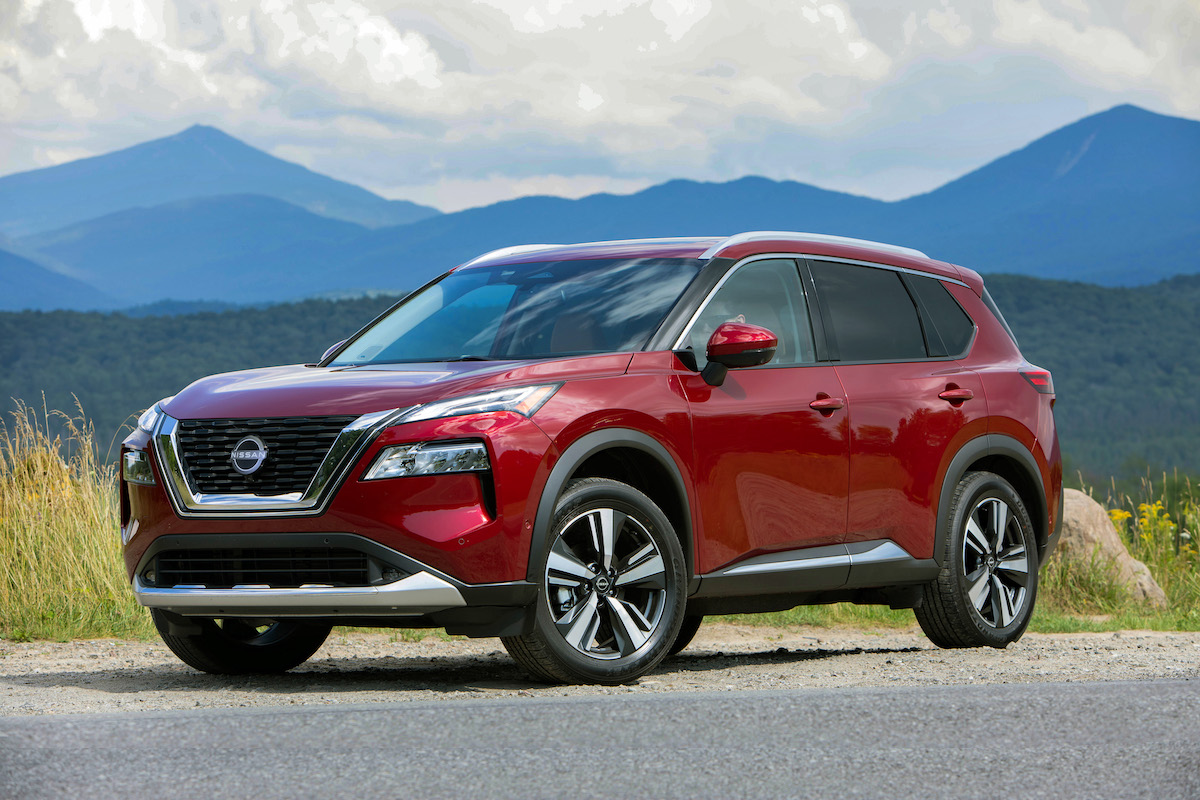
4. Nissan Altima: The ‘Big Altima Energy’ Phenomenon
The Nissan Altima has developed a distinct and pervasive reputation for its drivers’ behaviors, so much so that the phrase ‘Big Altima Energy’ has entered popular lexicon to describe the blend of aggressive and often reckless driving associated with the model. While not specifically ranked on the main LendingTree study, reader comments overwhelmingly place the Altima high on their personal lists of ‘worst offenders.’
Drivers describe a consistent pattern of problematic behavior, often seeing ‘Ram trucks and 10-year-old Nissan Altimas with tattered temp tags that have probably been invalid for over a year’ ‘weaving in and out of traffic, tailgating, and otherwise creating mischief.’ This combination of questionable vehicle maintenance – implied by ‘clapped out Altima’ and expired temporary tags – with aggressive driving amplifies the perceived risk. The concern is further heightened by the chilling observation that ‘Whatever happens, you know they don’t have insurance,’ adding a layer of financial and logistical anxiety for anyone involved in an incident with such a vehicle.
Another reader explicitly places Altimas in the category of the ‘oblivious,’ suggesting a general disregard for road rules or awareness of surrounding traffic. This disregard, combined with aggressive tendencies, creates a highly unpredictable and therefore hazardous driving environment. The phenomenon of ‘Big Altima Energy’ serves as a clear warning sign for other drivers, indicating that close proximity to these vehicles often warrants extra caution and defensive driving, transforming an otherwise common sedan into a vehicle notorious for its challenging driver base.
Car Model Information: 2023 Nissan Altima SR FWD
Name: Nissan Altima
Caption: 2024 Nissan Altima SR (L34; US)
Manufacturer: Nissan
Aka: Nissan Bluebird
Production: 1992–present
Class: Compact car
Predecessor: Nissan Bluebird,Nissan Stanza
ModelYears: 1993–present
Categories: 2000s cars, 2010s cars, 2020s cars, All-wheel-drive vehicles, All Wikipedia articles written in American English
Summary: The Nissan Altima is a mid-size car manufactured by Nissan since 1992. It is a continuation of the Nissan Bluebird line, which began in 1955.
The Altima has historically been larger, more powerful, and more luxurious than the Nissan Sentra but less so than the Nissan Maxima. The first through fourth-generation cars were manufactured exclusively in the United States and officially sold in North and South America, along with the Middle East and Australia. For other markets, Nissan sold a related mid-size sedan called the Nissan Teana which was between the Altima and Maxima in terms of size. In 2013, the Teana became a rebadged version of the fifth-generation Altima.
The name “Altima” was originally applied to a top trim line of the Nissan Leopard for the Japanese market in 1986, and then to the Nissan Laurel Altima mid-size car sold in Central America and the Caribbean before 1992. In 1992, Nissan discontinued the Stanza which was a Nissan Bluebird clone, replacing it with the US-built Altima, while remaining a compact car. The first Altima was produced in June 1992, as a 1993 model. All Altima models for the North American market were built in Smyrna, Tennessee, until June 2004, when Nissan’s Canton, Mississippi plant also began producing the model to meet high demand.
Get more information about: Nissan Altima
Buying a high-performing used car >>>
Brand: Nissan Model: Altima
Price: $20,500 Mileage: 33,732 mi.

5. Toyota Camry/Corolla: The Unaware Appliance Drivers
Toyota, a brand synonymous with reliability and practicality, ironically finds its drivers frequently cited for problematic behaviors, especially concerning models like the Camry and Corolla. While Toyota as a brand ranks tenth on the LendingTree study with ‘29.09 incidents per 1,000 drivers,’ featuring the eighth-highest accident rate and fourteenth-highest DUI rate, the anecdotal evidence paints a more nuanced picture focused on a particular type of driver. These vehicles, often purchased based on ‘Consumer Reports or getting the most car for the money,’ tend to attract individuals who view driving as a chore rather than a skill, resulting in a distinct set of ‘headaches’ for others on the road.
Camry drivers are often described as ‘terrible drivers for going too slow and not being aware of faster moving traffic around them,’ with a propensity to ‘camp in the left lane without a care.’ This lack of situational awareness and adherence to basic lane discipline frustrates faster-moving traffic and can create hazardous congestion. Corolla drivers, perhaps due to the model’s ubiquity and appeal to a broad demographic including new or indifferent drivers, are noted for even more extreme examples of ‘dumbest, craziest thing you could possibly imagine.’ This includes ‘Blind lane changes without signalling,’ ‘Turning left with oncoming traffic,’ ‘Turning left from the right lane,’ ‘Running red lights,’ and even ‘Stopping on roundabouts to let cars in.’
The sheer volume of these vehicles – ‘about a billion of them on the road because they’re good, reliable cars that are cheap to run’ – means that these behaviors are frequently encountered. The Corolla’s appeal to those ‘who hates driving, or isn’t good at driving, or is just starting driving, or just wants an appliance for driving’ contributes significantly to this perception. While the cars themselves are renowned for their dependability, their drivers’ collective habits present a consistent challenge to road safety and flow, making them a significant ‘headache’ for those who prioritize attentive and predictable driving.

6. Chevrolet Corvair: The Handling Disaster
Shifting our focus from driver behavior to inherent vehicle design, the Chevrolet Corvair stands as a classic example of a car that became synonymous with safety concerns. Introduced with a futuristic rear-engine design and clean styling in its early models, its underlying engineering proved to be a ‘handling disaster.’ The notorious swing-axle rear suspension allowed for dangerous amounts of oversteer, particularly evident during emergency maneuvers or sudden weight shifts. Compounding this issue was the absence of a front anti-roll bar in the initial models, which exacerbated the vehicle’s instability. Furthermore, owners were often not adequately informed about the critical importance of maintaining precise tire pressures, front to rear, to mitigate these inherent handling quirks.
This design deficiency was famously brought to national attention by Ralph Nader’s seminal 1965 book, “Unsafe at Any Speed.” The Corvair was singled out by name, becoming a powerful symbol of automotive negligence and a poster child for the then-nascent consumer safety movement. Nader’s criticisms, regardless of subsequent debates about their scientific rigor, indelibly stamped the Corvair with a reputation for being inherently dangerous. The public perception shifted dramatically, linking the Corvair with ‘chaos on wheels,’ a label from which the vehicle’s image never truly recovered.
General Motors did eventually address these engineering shortcomings, introducing a more conventional rear suspension in 1964 and a fully independent setup with the 1965 redesign. These improvements substantially enhanced the vehicle’s stability and handling characteristics. However, the cultural damage had already been done, proving permanent. Despite these later engineering refinements, the Corvair’s initial reputation for instability and the intense media scrutiny it faced ensured its place in the automotive hall of shame, highlighting how early design flaws can cast a long and enduring shadow over a vehicle’s legacy and public trust.
Car Model Information: 1964 Chevrolet Corvair Monza
Caption: 1964 Chevrolet Corvair Monza
Name: Chevrolet Corvair
Manufacturer: Chevrolet
Production: 1960–1969
Platform: GM Z platform
Chassis: Unibody
ModelYears: 1960–1969
Assembly: United States,Kansas City, Missouri,Oakland, California,Van Nuys,St. Louis,Flint, Michigan,Belgium,Canada,Mexico,South Africa,Switzerland,Venezuela
Class: Compact car
Successor: Chevrolet Vega
Layout: Rear-engine, rear-wheel-drive layout
Categories: All Wikipedia articles written in American English, All articles lacking in-text citations, All articles needing additional references, All articles with dead external links, All articles with specifically marked weasel-worded phrases
Summary: The Chevrolet Corvair is a rear-engined, air-cooled compact car manufactured and marketed by Chevrolet over two generations between 1960 and 1969. The Corvair was a response to the increasing popularity of small, fuel-efficient automobiles, particularly the imported Volkswagen Beetle and American-built compacts like the Rambler American and Studebaker Lark.
The first generation (1960–1964) was offered as a four-door sedan, two-door coupe, convertible, and four-door station wagon. A two- and four-door hardtop and a convertible were available second-generation (1965–1969) variants. The Corvair platform was also offered as a subseries known as the Corvair 95 (1961–1965), which consisted of a passenger van, commercial van, and pickup truck variant. Total production was approximately 1.8 million vehicles from 1960 until 1969.
The name “Corvair” was first applied in 1954 to a Corvette-based concept with a hardtop fastback-styled roof, part of the Motorama traveling exhibition. When applied to the production models, the “air” part referenced the engine’s cooling system.
A prominent aspect of the Corvair’s legacy derives from controversy surrounding the handling of early models equipped with rear swing axles, articulated aggressively by Ralph Nader’s Unsafe at Any Speed but tempered by a 1972 Texas A&M University safety commission report for the National Highway Traffic Safety Administration (NHTSA) which found that the 1960–1963 Corvair possessed no greater potential for loss of control in extreme situations than contemporary compacts.
To better counter popular inexpensive subcompact competitors, notably the Beetle and Japanese imports such as the Datsun 510, GM replaced the Corvair with the more conventional Chevrolet Vega in 1970.
Get more information about: Chevrolet Corvair
Buying a high-performing used car >>>
Brand: Chevrolet Model: Corvair
Price: $29,988 Mileage: 74,787 mi.
Read more about: More Than Just a Chassis: Uncovering 11 Catastrophic Design Flaws That Defined Automotive Infamy
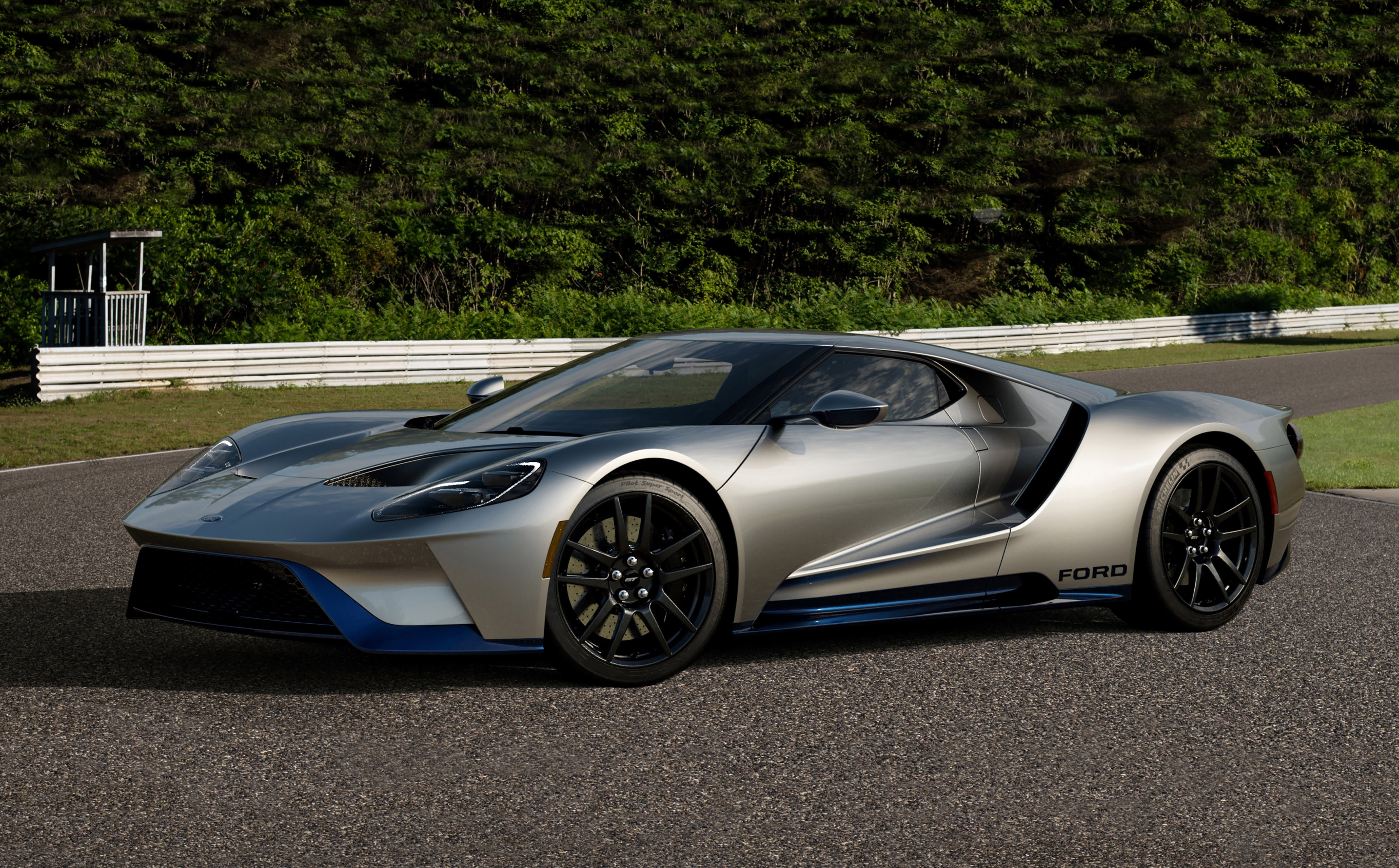
7. Ford Pinto: The Fuel Tank Fire Hazard
The Ford Pinto, intended as an affordable subcompact to compete with surging Japanese imports, instead became a stark and tragic lesson in prioritizing profit over human safety. Its design featured a critical and ultimately fatal flaw: the fuel tank was inexplicably placed behind the rear axle, an engineering decision that proved catastrophically vulnerable in rear-end collisions. This placement meant that even moderate impacts, especially those involving the differential bolts, could rupture the fuel tank and cause it to ignite with terrifying speed. The consequences were severe, leading to multiple deaths and horrific burn injuries, which, in turn, precipitated a cascade of lawsuits against Ford.
Perhaps the most damning revelation surrounding the Pinto came with the surfacing of an infamous internal memo. This document, shockingly, indicated that Ford had conducted a cost-benefit analysis that concluded it would be ‘cheaper to pay off lawsuits than to actually fix the damn problem.’ This internal calculation, which literally valued human lives against the cost of a recall and redesign, sparked outrage and cemented the Pinto’s notoriety as a symbol of corporate callousness. Mother Jones magazine published the damning details in 1977, igniting a media firestorm that left an indelible scar on Ford’s reputation and on public trust in automotive safety.
While later models did see some design improvements, such as the addition of a plastic shield around the fuel tank, these measures were largely seen as insufficient and reactive. The Pinto was never able to shake off its damning reputation. To this day, the phrase ‘Pinto fire’ remains a common idiom to describe any hazardous engineering shortcut or a situation where cost savings are dangerously prioritized over safety. This vehicle serves as a powerful and enduring reminder of the severe ‘headaches’ that can arise when fundamental safety principles are compromised in the pursuit of efficiency and profit, leaving a legacy of tragedy and distrust.
Navigating the automotive landscape requires more than just understanding driver behavior; it demands an awareness of the vehicles themselves, particularly those marred by design disasters, media scandals, and persistent reliability concerns. Continuing our deep dive into the vehicles that have become ‘headaches on wheels,’ this section unpacks additional notorious examples that, through inherent flaws or intense public scrutiny, cemented their place in automotive infamy.
From vehicles prone to spontaneous combustion to those accused of ‘unintended acceleration,’ these case studies highlight the critical importance of engineering integrity and corporate accountability. We examine how initial design choices, often driven by budget or innovation, sometimes led to catastrophic outcomes, underscoring the vital role of consumer advocacy and rigorous safety standards in shaping the automotive industry.
Car Model Information: 1978 Ford Pinto RUNABOUT HATCHBACK
Name: Ford Pinto
Caption: Ford Pinto
Manufacturer: Ford Motor Company
Aka: Mercury Bobcat
Production: September 1970 – July 1980
ModelYears: 1971–1980 (Pinto),1974–1980 (Bobcat)
Assembly: Edison, New Jersey,Milpitas, California
Designer: Robert Eidschun (1968)
Class: Subcompact car
BodyStyle: Sedan (automobile),sedan delivery,station wagon,hatchback
Related: #Mercury Bobcat (1974–1980),Ford Mustang (second generation)
Layout: Front-engine, rear-wheel-drive layout
Chassis: Unibody
Engine: unbulleted list
Abbr: on
Disp: Ford Cologne engine
Transmission: unbulleted list
Wheelbase: 94.0 in
Length: 163 in
Width: 69.4 in
Height: 50 in
Weight: convert
Predecessor: Ford Cortina#Mark II (1966–1970)
Successor: Ford Escort (North America)
Categories: 1980s cars, Articles with short description, Cars discontinued in 1980, Cars introduced in 1970, Commons category link from Wikidata
Summary: The Ford Pinto is a subcompact car that was manufactured and marketed by Ford Motor Company in North America from 1970 until 1980. The Pinto was the first subcompact vehicle produced by Ford in North America.
The Pinto was marketed in three body styles throughout its production: a two-door fastback sedan with a trunk, a three-door hatchback, and a two-door station wagon. Mercury offered rebadged versions of the Pinto as the Mercury Bobcat from 1975 until 1980 (1974–1980 in Canada). Over three million Pintos were produced over its ten-year production run, outproducing the combined totals of its domestic rivals, the Chevrolet Vega and the AMC Gremlin. The Pinto and Mercury Bobcat were produced at Edison Assembly in Edison, New Jersey, St. Thomas Assembly in Southwold, Ontario, and San Jose Assembly in Milpitas, California.
Since the 1970s, the safety reputation of the Pinto has generated controversy. Its fuel-tank design attracted both media and government scrutiny after several deadly fires occurred when the tanks ruptured in rear-end collisions. A subsequent analysis of the overall safety of the Pinto suggested it was comparable to other 1970s subcompact cars. The safety issues surrounding the Pinto and the subsequent response by Ford have been cited widely as business ethics and tort reform case studies.
Get more information about: Ford Pinto
Buying a high-performing used car >>>
Brand: Ford Model: Pinto
Price: $18,995 Mileage: 88,217 mi.
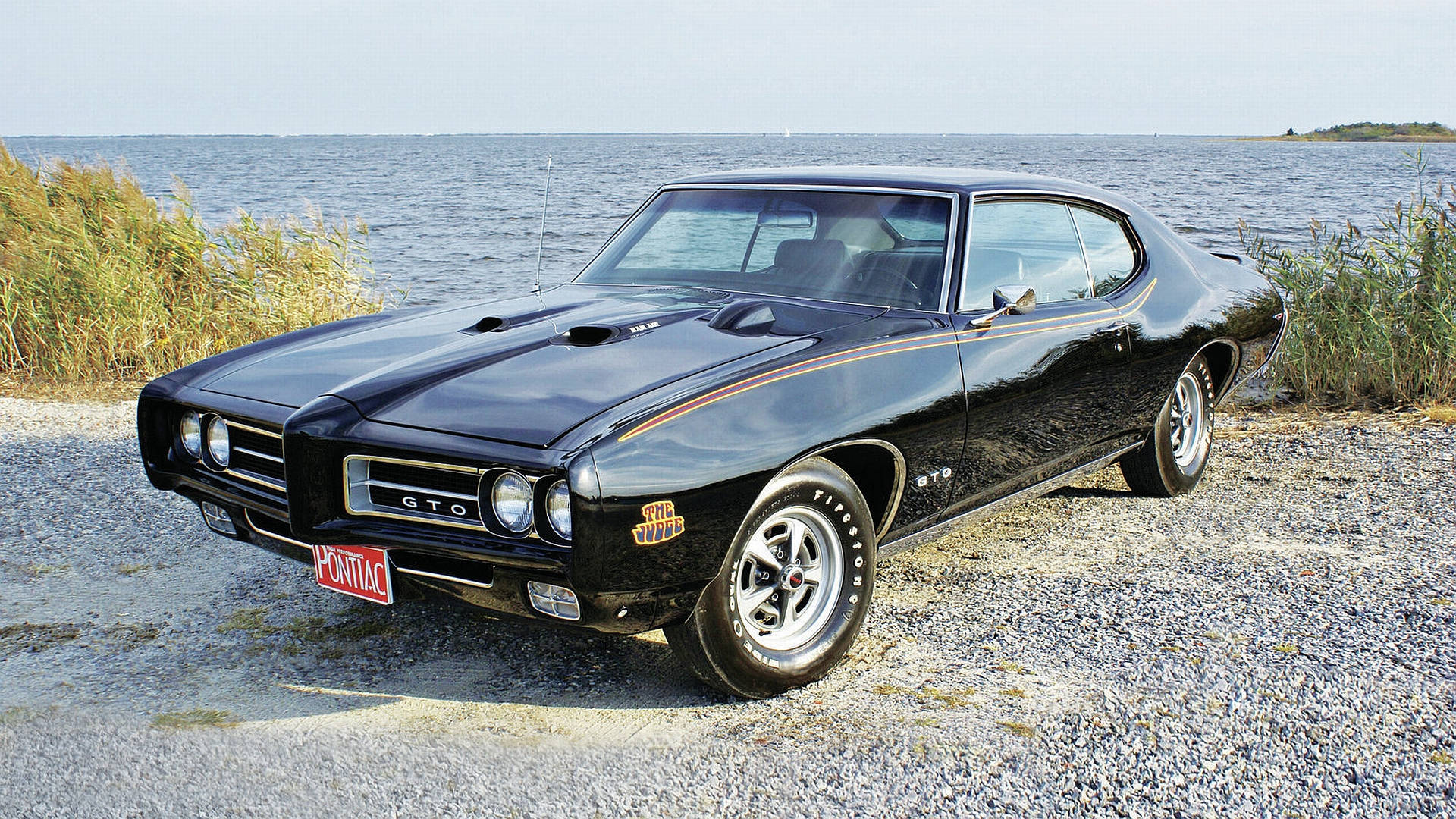
8. Pontiac Fiero: The Mid-Engine Death Trap
When Pontiac first introduced the Fiero, it was marketed as an exciting, affordable mid-engine coupe, a budget-friendly option for those seeking a sporty driving experience. However, this innovative design quickly garnered a more ominous reputation, becoming notoriously associated with an alarming issue: spontaneous engine fires. Owners found themselves grappling with real-life flames igniting under the engine cover, transforming a spirited drive into a terrifying ordeal.
The primary culprit behind these dangerous incidents was identified as oil leaks originating from the infamous 2.5L ‘Iron Duke’ engine. These leaks allowed oil to spray onto hot engine parts, creating a severe fire hazard. Later investigations further revealed that faulty connecting rods in some instances could punch through engine blocks, effectively spraying oil directly onto the exhaust manifold and significantly increasing the risk of combustion.
By 1987, a staggering nearly 250 fires had been reported, prompting General Motors to issue a massive recall. This recall was a desperate attempt to mitigate the widespread safety concerns and restore public trust. While later models of the Fiero did receive significant improvements, including better suspension and more reliable engine options like the V6, the damage to its reputation from these early, fiery years was already permanent. Despite its underlying potential as a fun and affordable exotic, the Fiero remains largely remembered for its association with roadside fires and the serious safety issues that plagued its initial production.
Car Model Information: 1986 Pontiac Fiero SPORT GT
Name: Pontiac Fiero
Caption: 1988 Fiero Formula
Manufacturer: Pontiac (automobile)
Production: August 1983 – August 16, 1988,370,168 produced
ModelYears: 1984 – 1988
Successor: Pontiac Solstice
Assembly: Pontiac, Michigan
Designer: Hulki Aldikacti,George Milidrag
Class: Sports car
BodyStyle: fastback,notchback
Platform: GM P platform
Layout: Rear mid-engine, rear-wheel-drive layout
Engine: {{cvt,151,CID,L,1,disp=flip,Iron Duke engine#LR8,Inline-four engine
Transmission: Turbo-Hydramatic 125,Manual transmission,Getrag 282 transmission,Isuzu
Wheelbase: 2373 mm
Abbr: on
Length: 4072 mm
Width: 1750 mm
Height: 1191 mm
Weight: 1116 to
Categories: All articles with unsourced statements, Articles with short description, Articles with unsourced statements from February 2012, Articles with unsourced statements from July 2024, Articles with unsourced statements from September 2011
Summary: The Pontiac Fiero is a rear mid-engine, light sports car manufactured and marketed by Pontiac for model years 1984 – 1988. Intended as an economical commuter car with modest performance aspirations, it was Pontiac’s first two-seater since their 1926 to 1938 coupes, and the first mass-produced, rear mid-engine car by any American manufacturer.
In addition to using 4- and 6-cylinder engines to help Pontiac meet America’s ‘CAFE’ average fuel economy requirements, the Fiero’s chassis and structure technology used non-load-bearing, composite body-panels, contributing to the car’s light-weight and its unique selling proposition. Pontiac engineers modified the design over its life to enhance its performance and reposition the two-seater closer to the implications of its sporty configuration.
The Fiero 2M4 (two-seat, mid-engine, four-cylinder) placed on Car and Driver magazine’s Ten Best list for 1984, and was the Official Pace Car of the Indianapolis 500 for 1984.
A total of 370,168 Fieros were manufactured over five years’ production, its mild performance, reliability and safety issues becoming points of criticism. The Fiero was discontinued after annual sales fell steadily.
Get more information about: Pontiac Fiero
Buying a high-performing used car >>>
Brand: Pontiac Model: Fiero
Price: $11,990 Mileage: 98,558 mi.

9. Jeep CJ-5: The Rollover Risk
The Jeep CJ-5 embodied the spirit of freedom and off-road adventure, with its rugged design and open-air capabilities making it a quintessential symbol for enthusiasts. Yet, beneath its iconic, adventurous facade, the CJ-5 harbored a dangerous reputation for rollovers, particularly when driven outside its intended off-road environment. Its compact 81-inch wheelbase, combined with a relatively high center of gravity, rendered it remarkably unstable and ‘twitchy’ on paved roads, a stark contrast to its confident performance on dirt trails.
Insurance companies, recognizing the inherent risks, were quick to flag the CJ-5 for having one of the highest rollover rates among all passenger vehicles during the 1970s. While the vehicle was never designed for high-speed highway cruising, many buyers regrettably used it as their primary mode of transportation, leading to predictably catastrophic accidents. This misuse, coupled with its design characteristics, frequently resulted in severe incidents.
A critical 1981 report from the National Highway Traffic Safety Administration (NHTSA) further highlighted the CJ-5’s serious stability issues, specifically citing its narrow track and short wheelbase as contributing factors. The vehicle’s legendary charm and capability off-road unfortunately did not translate into suburban safety, and this concerning reputation persisted long after its production ceased. For those encountering a CJ-5 on the highway, a wide berth was often given not merely out of respect for its heritage, but out of a prudent sense of self-preservation.
Car Model Information: 1974 Jeep CJ-5 Base
Name: Jeep CJ
Caption: Jeep CJ-2A
Manufacturer: Willys-Overland,Willys Motors,Kaiser Jeep,American Motors Corporation
BodyStyle: Sport utility vehicle,convertible,pickup truck
Production: 1944–1986,More than 1.5 million
Class: sport utility vehicle
Layout: Front-engine, rear-wheel-drive layout,rear-wheel drive
Assembly: Toledo Complex,Maywood, California,Brampton Assembly (AMC),Pars Khodro,Cairo,Istanbul,São Bernardo do Campo
Successor: Jeep Wrangler,Jeep Comanche
Predecessor: Willys MB,Jeep Commando
Categories: AMC vehicles, All articles with unsourced statements, American Motors, Articles with short description, Articles with unsourced statements from April 2025
Summary: The Jeep CJ models are a series and a range of small, open-bodied off-road vehicles and compact pickup trucks, built and sold by several successive incarnations of the Jeep automobile marque from 1945 through 1986. The 1945 Willys “Universal Jeep” was the world’s first mass-produced civilian four-wheel drive car.
In 1944, Willys-Overland, the primary manufacturer of the World War II military Jeep, built the first prototypes for a commercial version – the CJ, short for “civilian Jeep”. The design was a direct evolution from the wartime Jeep, but the most obvious change was adding a tailgate, and relocating the spare wheel to the side. Also, besides adding basic civilian amenities and options and legally-compliant lighting, the CJ required a sturdier drivetrain than the wartime model, because the targeted rural buyers would expect years of durability, instead of mere weeks as during WWII.
From then on, all CJ Jeeps consistently had a separate body and frame, rigid live axles with leaf springs both front and rear, a tapering nose design with flared fenders, and a fold-flat windshield, and could be driven without doors. Also, with few exceptions, they had part-time four-wheel drive systems, with the choice of high and low gearing, and open bodies with removable hard or soft tops. A few stand-out changes during 42 model years were the introductions of round-fendered vs. flat-fendered bodies (1955 CJ-5), straight-6 and V8-engines, automatic gearboxes, and different 4-wheel drive systems. The 1976 CJ-7 stretched the wheelbase by 10 inches (25 cm), and made doors and a removable hardtop common items.
After remaining in production through a range of model numbers, and several corporate parents, the Jeep CJ line was officially ended after 1986. More than 1.5 million CJ Jeeps were built, having continued the same basic body style for 45 years since the Jeep first appeared. Widely regarded as “America’s workhorse”, the CJs have been described as “probably the most successful utility vehicle ever made.” American Motors VP Joseph E. Cappy said the end of “CJ production will signal an end of a very important era in Jeep history.” In 1987, the Jeep CJ-7 was replaced by the first-generation Jeep Wrangler. Looking very similar and riding on the same wheelbase as the CJ-7, it carried over some important components, including its use of leaf springs.
The similar model the DJ “Dispatcher” was introduced in 1956 as a two-wheel drive version with open, fabric, or a closed steel body in both left- and right-hand drives for hotel, resort, police, and later United States Postal Service markets.
Get more information about: Jeep CJ
Buying a high-performing used car >>>
Brand: Jeep Model: CJ-5
Price: $15,999 Mileage: 19,384 mi.
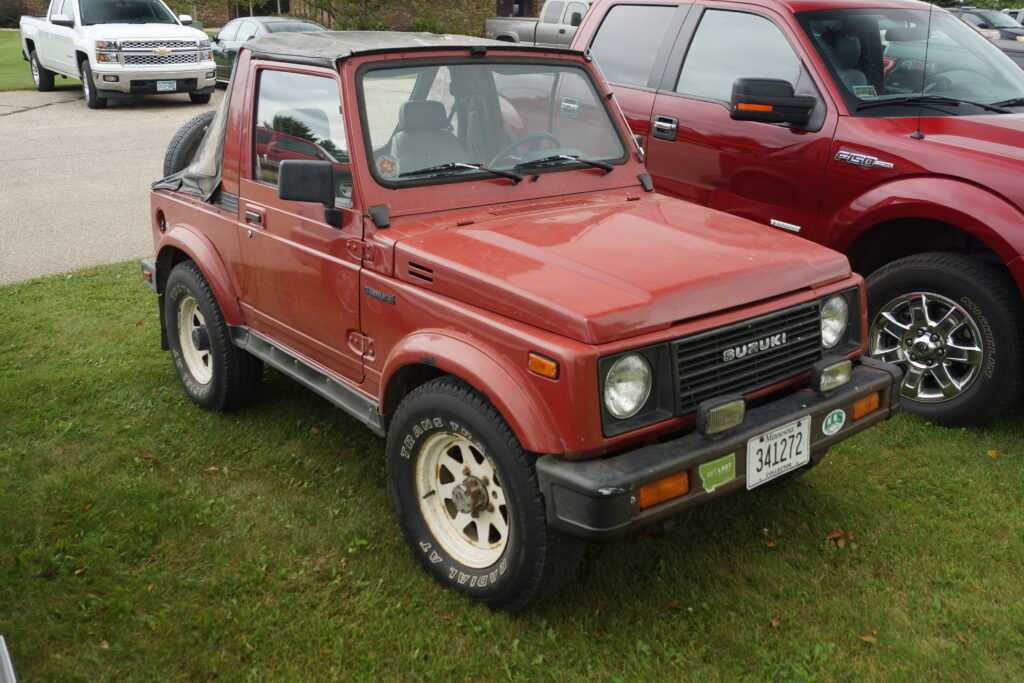
10. Suzuki Samurai: The Media’s Punching Bag
The Suzuki Samurai emerged as an affordable and cheerful option for off-roading, quickly earning a reputation as a nimble ‘mountain goat for the masses.’ However, its notoriety took a sharp turn after a highly influential 1988 Consumer Reports article labeled it “Unacceptable,” dramatically claiming the vehicle easily tipped over in routine avoidance maneuvers. This devastating review resonated widely through the press, causing immediate and significant damage to the Samurai’s public image.
Despite Suzuki’s vigorous legal battles against Consumer Reports, which eventually resulted in a settlement and the issuance of a ‘fact sheet’ to owners, sales of the Samurai plummeted. The media storm created by the article lingered for years, irrevocably associating the vehicle with extreme rollover risk in the public consciousness. This perception was amplified by its lightweight construction, narrow track, and stiff suspension, characteristics that, while contributing to its off-road agility, did indeed make it prone to tipping if driven aggressively on pavement.
Ironically, true off-road enthusiasts continued to praise the Samurai for its exceptional agility and toughness in challenging terrains. However, the screaming headlines and pervasive warnings successfully deterred many potential buyers, particularly parents and commuters seeking a safe family vehicle. The Suzuki Samurai thus became a poignant example of how a single negative review, even amidst later factual clarifications, can inflict lasting damage on a product’s reputation and significantly hinder a brand’s overall market presence.
Car Model Information: 1987 Suzuki Samurai Base
Name: Suzuki Jimny
Caption: 2019 Suzuki Jimny SZ5
Manufacturer: Suzuki
Production: April 1970 – present (2.85 million units sold by September 2018)
Class: Off-road vehicle,mini SUV
BodyStyle: SUV,van,convertible,pickup truck
Layout: Front-engine, rear-wheel-drive layout,Front-engine, four-wheel-drive layout
Chassis: Body-on-frame
Related: Maruti Gypsy
Categories: 1980s cars, 1990s cars, 2000s cars, 2010s cars, All articles with minor POV problems
Summary: The Suzuki Jimny (Japanese: スズキ・ジムニー, Suzuki Jimunī) is a series of four-wheel drive off-road mini SUVs, manufactured and marketed by Japanese automaker Suzuki since 1970.
Originally belonging to the kei class, Japan’s light automobile tax/legal class, the company continues to market a kei-compliant version for the Japanese and global markets as the Jimny, as well as versions that exceed kei-class limitations. Suzuki has marketed 2.85 million Jimnys in 194 countries through September 2018.
Get more information about: Suzuki Jimny
Buying a high-performing used car >>>
Brand: Suzuki Model: Samurai
Price: $17,500 Mileage: 1,000 mi.

11. Chevrolet C/K Pickup: The Sidesaddle Tank Scandal
Chevrolet’s C/K pickups, particularly models from the 1970s and 1980s, were ubiquitous workhorses across America, embodying rugged utility and durability. Yet, an inherent design flaw transformed these trusted vehicles into what many considered a ‘ticking time bomb.’ Their fuel tanks, infamously dubbed ‘sidesaddle’ tanks, were mounted outside the frame rails underneath the cab. This placement made them alarmingly vulnerable in side-impact collisions.
Extensive testing demonstrated that even moderate side collisions could easily rupture these tanks, leading to immediate and catastrophic explosions, especially in the absence of any robust protective barrier. The severity of this design deficiency came to a head in 1993, following a now-infamous Dateline NBC report. The program featured a dramatized, and later admitted to be rigged, crash demonstration that appeared to show a truck exploding on cue, though NBC subsequently apologized for the staging.
Despite the controversy surrounding NBC’s methods, further government testing conclusively confirmed the very real and serious danger posed by the sidesaddle fuel tank design. General Motors ultimately faced and paid out millions in settlements, with estimates ranging between $500 million and $1 billion, in response to numerous lawsuits. However, the company notoriously never admitted fault or issued a comprehensive recall. The Chevrolet C/K pickup remains a stark reminder of how design compromises can lead to profound safety risks, and its legacy continues to underscore the critical balance between utilitarian design and unwavering passenger safety.
Car Model Information: 2023 Buick Envision Preferred
Name: Chevrolet and GMC C/K
Caption: 1986 GMC C-3500 Sierra Classic 3+3
Manufacturer: General Motors
Aka: GMC C/K,Chevrolet/GMC Full-Size Pickup,Chevrolet Silverado (1975–2002),GMC Sierra (1972–2002)
Production: 1959–2002 (United States),1959–2000 (Canada),1965–2002 (Mexico),1964–2001 (Brazil),1975–1982 (Chile), 1960–1991 (Argentina)
Class: Pickup truck,Medium-duty truck
Predecessor: Chevrolet Task Force
Successor: Chevrolet Silverado
ModelYears: 1960–2000 (C/K pickup trucks)
Categories: Articles with short description, CS1 Portuguese-language sources (pt), Cars introduced in 1959, Chevrolet trucks, Commons category link is on Wikidata
Summary: The Chevrolet C/K is a series of trucks that was manufactured by General Motors from the 1960 to 2002 model years. Marketed by both the Chevrolet and GMC divisions, the C/K series encompassed a wide range of vehicles. While most commonly associated with pickup trucks, the model line also included chassis-cab trucks and medium-duty trucks and served as the basis for GM full-size SUVs. Through its entire production, the model line competed directly against the Ford F-Series and the Dodge D series (later the Dodge Ram pickup).
Used for both the model branding and the internal model code, “C” denoted two-wheel drive, while “K” denoted four-wheel drive. Four generations of the C/K series were produced, including the GM monikered second-generation “Action Line” and third-generation “Rounded Line” vehicles (colloquially aka Square-Body trucks). For the fourth-generation (colloquially also known as OBS trucks), Chevrolet kept using the C/K designation while GMC revised its branding, changing to a singular GMC Sierra nameplate (C/K remained as an internal model code).
For South America, the model line was manufactured by General Motors de Argentina from 1960 to 1978, Sevel Argentina from 1986 to 1991, and General Motors Brazil, who produced versions of the model line for Brazil, Argentina, and Chile from 1964 to 2001.
As GM entered the 1990s, the company revised its truck ranges, replacing the medium-duty C/K trucks with the Chevrolet Kodiak/GMC TopKick for 1990. For 1999, GM replaced the fourth-generation C/K pickup trucks with an all-new model line; in line with GMC, Chevrolet dropped the C/K nameplate (in favor of a singular Chevrolet Silverado nameplate). Initially marketed with its successor, the final C/K pickup trucks were produced for the 2000 model year. From 2001 to 2002, the final vehicles of the C/K model line were medium-duty chassis cab trucks.
Get more information about: Chevrolet C/K
Buying a high-performing used car >>>
Brand: Chevrolet Model: C/K Pickup
Price: $20,221 Mileage: 46,554 mi.
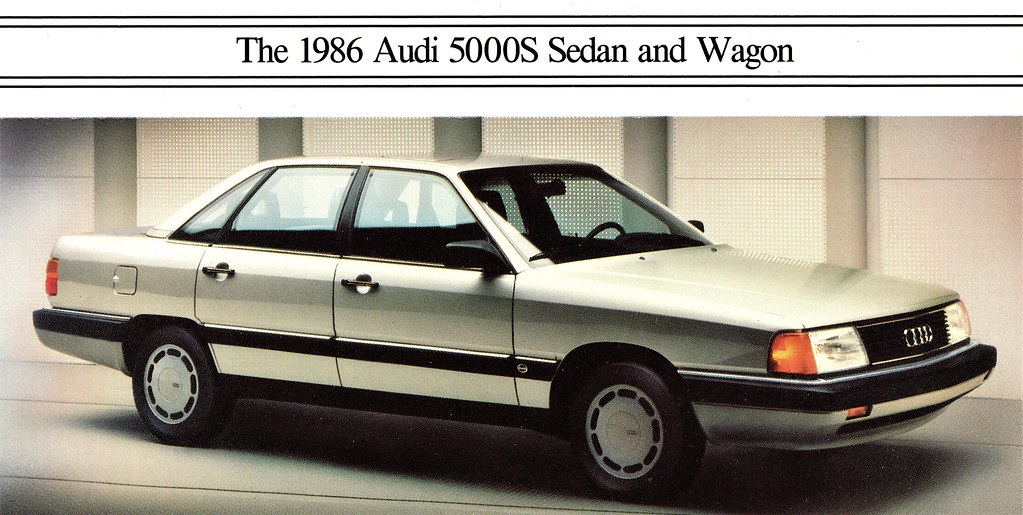
12. Audi 5000: The Unintended Acceleration Controversy
The Audi 5000 initially soared as a success story in the luxury import market, lauded for its sophisticated design and performance. Its ascent, however, was dramatically halted by a wave of alarming reports concerning ‘unintended acceleration’ in the early 1980s. Drivers across the nation claimed their vehicles would suddenly surge forward, often while the driver was attempting to brake, leading to terrifying accidents and, in some tragic instances, fatalities.
The situation escalated into a full-blown crisis after a sensational 60 Minutes segment aired in 1986. The program vividly showcased the alleged issue on national television, featuring a dramatic demonstration that, much like the Dateline NBC incident, was later proven to be rigged and misleading. This highly visible media exposure had an immediate and devastating impact on Audi’s reputation and sales.
Years of meticulous investigations conducted by both the NHTSA and Canadian regulators eventually concluded that the vast majority of these incidents were attributable to driver error. The most commonly cited factors included the close spacing of the gas and brake pedals, which could lead to confusion, or simply driver panic in unexpected situations. Nevertheless, the cultural damage was already irreversible. Sales of the Audi 5000 plummeted by an astonishing 70% after the 60 Minutes report, and Audi’s brand image in the U.S. did not truly recover until the early 2000s, illustrating the potent and long-lasting effects of media sensationalism on public perception and brand trust.
Car Model Information: 2018 Audi Q7 3.0T Prestige
Name: Audi 100 / Audi 200 / Audi 5000
Aka: Audi 5000
Manufacturer: Auto Union
Production: 1968–1994
Class: Luxury vehicle#Mid-size luxury.2Fexecutive cars
Layout: front-wheel drive
Platform: Volkswagen Group C platform
Successor: Audi A6
Categories: 1970s cars, 1980s cars, 1990s cars, 2000s cars, All-wheel-drive vehicles
Summary: The Audi 100 and Audi 200 (and sometimes called Audi 5000 in North America) are primarily mid-size/executive cars manufactured and marketed by the Audi division of the Volkswagen Group. The car was made from 1968 to 1997 across four generations (C1–C4), with a two-door model available in the first and second generation (C1-C2), and a five-door model available in the last three generations (C2–C4).They also made an 100 Avant in the 1970s.
In 1982, the third generation Audi 100 achieved a remarkably low (for its time) drag coefficient of 0.30, featuring flush greenhouse sides with unique sliding window mountings.
The C2 and C3 models of the Audi 100 were marketed in North America as the Audi 5000 from 1978 to 1988, and in South Africa as the Audi 500.
In 1993, the models were mildly restyled, and renamed the Audi A6 series in conjunction with a general new Audi naming scheme, until they were replaced by a new generation of A6, internally code-named C5, in 1997. The Audi 100’s traditional competitors include the Mercedes Benz E-Class and BMW 5-Series.
Get more information about: Audi 100
Buying a high-performing used car >>>
Brand: Audi Model: 5000
Price: $23,950 Mileage: 98,826 mi.
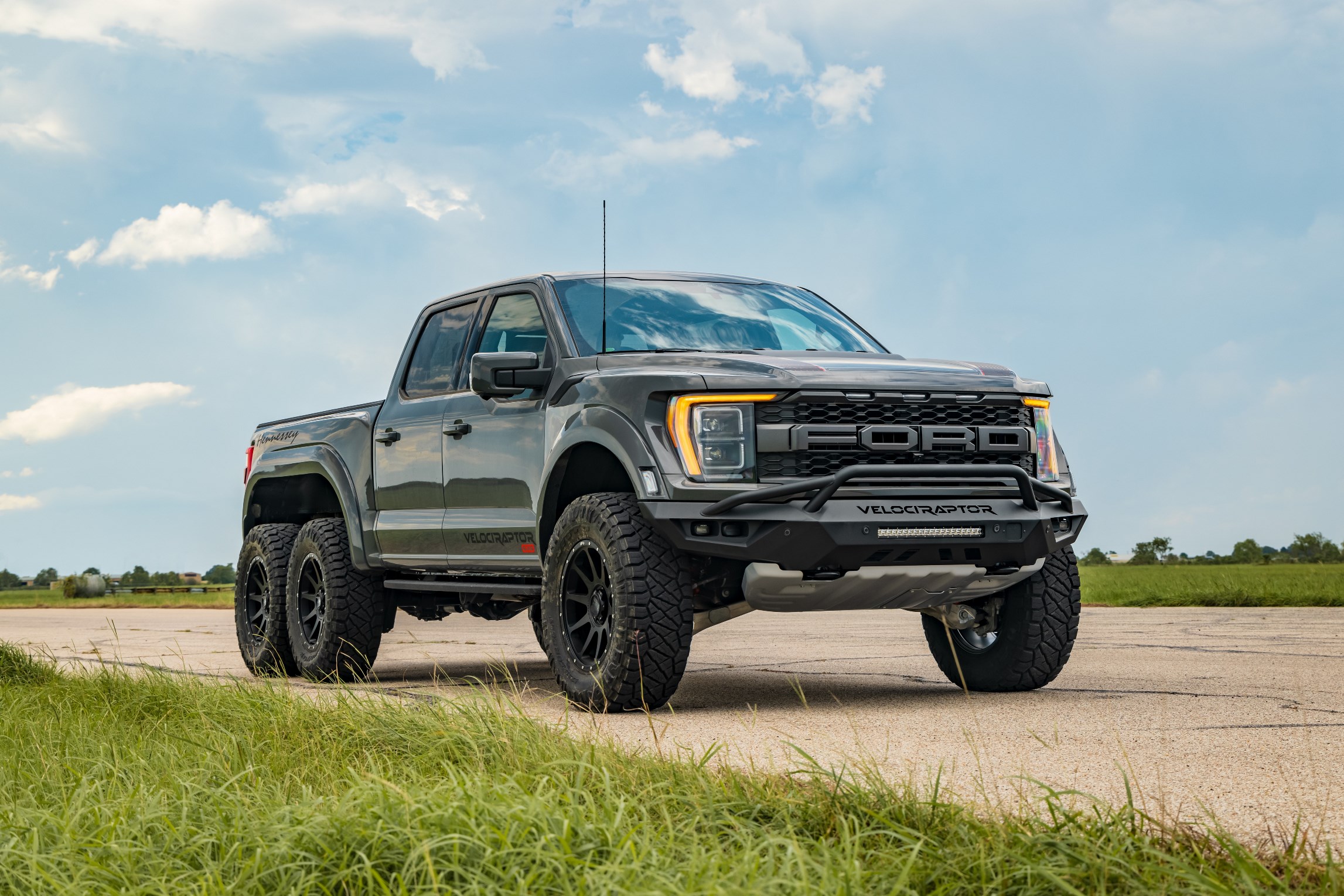
13. Ford Explorer with Firestone Tires: A Tragic Partnership
The Ford Explorer, especially models produced between 1991 and 2001, rose to prominence as a quintessential symbol of suburban freedom and adventure. Yet, this very symbol became a focal point of a major safety crisis due to catastrophic tire failures. A specific line of Firestone Wilderness AT tires, installed as original equipment on many Explorers, proved prone to tread separation, particularly when subjected to highway speeds and hot climates. These sudden blowouts often resulted in severe rollovers, transforming ordinary family road trips into harrowing disaster scenarios.
By the year 2000, the situation had escalated into a full-blown national scandal. Investigations uncovered a toxic blame game between Ford and Firestone, each attempting to shift responsibility. Ford was accused of recommending unusually low tire pressures, around 26 psi, ostensibly for ride comfort, a practice that dramatically increased heat buildup and stress on the Firestone tires. This critical flaw was eventually linked to at least 271 deaths and over 800 serious injuries in the U.S. alone, precipitating a massive recall of 6.5 million Firestone tires.
The aftermath involved extensive congressional hearings, numerous lawsuits, and endless corporate finger-pointing. For countless families, the human cost was immeasurable and irreversible. This episode stands as a classic and tragic case where corporate corner-cutting and a lack of clear accountability resulted in devastating consequences, leaving an indelible mark on both Ford’s and Firestone’s reputations for years to come.
Car Model Information: 2018 Ford Explorer Sport
Name: Ford Explorer
Caption: Sixth-generation Ford Explorer
Manufacturer: Ford Motor Company
Production: 1990–present
ModelYears: 1991–present
Class: unbulleted list
Chassis: unbulleted list
Predecessor: Ford Bronco II
Successor: Ford Territory (Australia)
Categories: 2000s cars, 2010s cars, 2020s cars, All-wheel-drive vehicles, All Wikipedia articles in need of updating
Summary: The Ford Explorer is a range of SUVs manufactured by the Ford Motor Company since the 1991 model year. The first five-door SUV produced by Ford, the Explorer, was introduced as a replacement for the three-door Bronco II. As with the Ford Ranger, the model line derives its name from a trim package previously offered on Ford F-Series pickup trucks. As of 2020, the Explorer became the best-selling SUV in the American market.
Currently in its sixth generation, the Explorer has featured a five-door wagon body style since its 1991 introduction. During the first two generations, the model line included a three-door wagon (directly replacing the Bronco II). The Ford Explorer Sport Trac is a crew-cab mid-size pickup derived from the second-generation Explorer. The fifth and sixth generations of the Explorer have been produced as the Ford Police Interceptor Utility (replacing both the Ford Crown Victoria Police Interceptor and the Ford Police Interceptor Sedan).
The Explorer is slotted between the Ford Edge and Ford Expedition within North America’s current Ford SUV range. The model line has undergone rebadging several times, with Mazda, Mercury, and Lincoln each selling derivative variants. Currently, Lincoln markets a luxury version of the Explorer as the Lincoln Aviator.
For the North American market, the first four generations of the Explorer were produced by Ford at its Louisville Assembly Plant (Louisville, Kentucky) and its now-closed St. Louis Assembly Plant (Hazelwood, Missouri). Ford currently assembles the Explorer alongside the Lincoln Aviator and the Police Interceptor Utility at its Chicago Assembly Plant (Chicago, Illinois).
Get more information about: Ford Explorer
Buying a high-performing used car >>>
Brand: Ford Model: Explorer
Price: $19,780 Mileage: 123,120 mi.
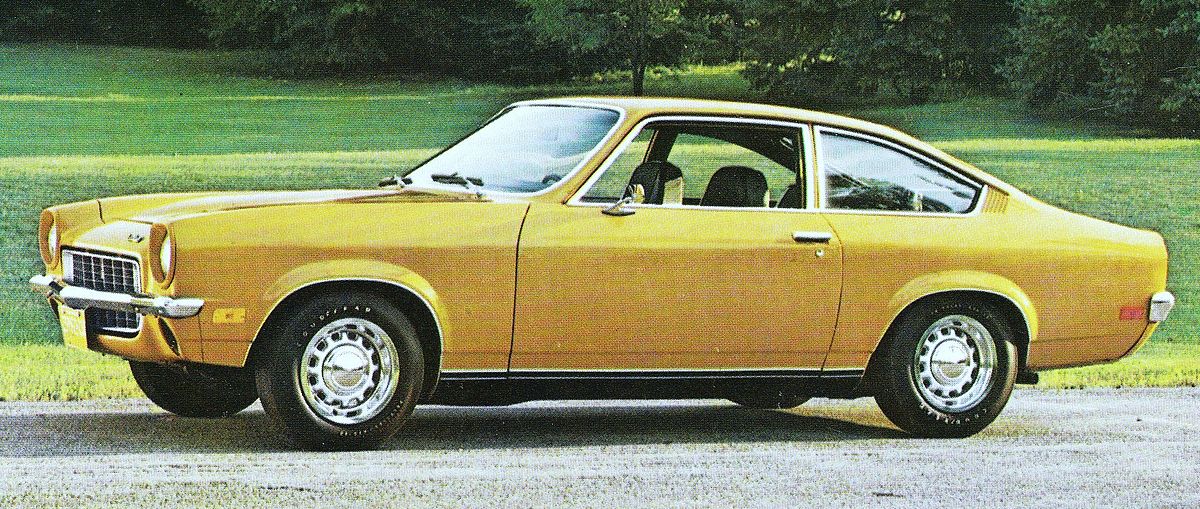
14. Chevrolet Vega (1971–1977): A Masterclass in Compromise
The Chevrolet Vega, GM’s ambitious response to the burgeoning compact car market, promised a sleek design and heralded a new era for American small cars. What it ultimately delivered, however, was a masterclass in how to build a vehicle that seemed destined to disintegrate prematurely. Its innovative, yet flawed, aluminum engine block was designed without cylinder liners, leading to rapid wear, excessive oil consumption, and catastrophic durability issues that plagued owners from the outset.
Beyond its engine woes, the Vega suffered from a woefully weak front structure and consistently poor crash test results. Even a moderate front-end collision had the potential to dangerously push the entire engine right into the passenger cabin, posing an extreme risk to occupants. Compounding these mechanical and structural deficiencies, the Vega’s rust protection was almost nonexistent, with front fenders often rotting out within a year or two, further compromising its structural integrity.
Critics universally panned the Vega as one of the worst vehicles GM ever produced, a sentiment hard to dispute given its litany of problems. Owning a Vega was akin to a permanent season of ‘Fear Factor,’ with owners constantly anticipating the next mechanical failure or structural breakdown. It served as a stark example of how a combination of design shortcuts, material compromises, and inadequate testing could culminate in a vehicle that was not just unreliable, but inherently dangerous in various critical aspects.
Ending on a Bad Note
Some cars are celebrated for pushing limits and breaking rules, earning a ‘bad to the bone’ reputation through their audacious performance. Then there are these vehicles—the ones that are just, undeniably, bad. At least, that’s the verdict from the people who truly matter: the consumers, and, grimly, the crash test dummies. Whether it was the fallout from sensationalist media reports, early design flaws that manufacturers simply couldn’t overcome, or genuinely deadly problems that should have been caught long before mass production, each of these vehicles earned its unenviable spot in the automotive hall of shame the hard way. They’ve been known to burst into flames, crumple like soda cans at the slightest impact, and succumb to rust faster than an old garden tool left out in the rain.
We’re not suggesting that every single one of these cars is inherently terrible; indeed, some of us have even admired, or perhaps even driven, a few of them ourselves. Yet, for the everyday driver of their era, the sheer visual impact of a car erupting into flames during a simple grocery run, or watching a vehicle essentially disintegrate in a minor fender-bender, was simply too much to overlook. And honestly, who could blame them? For consumers, the choice to avoid these ‘headaches on wheels’ often came down to a fundamental desire for safety, reliability, and peace of mind on the road—values that, for these notorious models, were conspicuously absent.”
Car Model Information: 1976 Chevrolet Vega
Name: Chevrolet Vega
Caption: 1971 Chevrolet Vega
Aka: Vega 2300
Manufacturer: Chevrolet
Production: 1970–1977
ModelYears: 1971–1977
Assembly: Lordstown, Ohio
Predecessor: Chevrolet Corvair
Successor: Chevrolet Monza
Class: Subcompact car
BodyStyle: notchback,hatchback,station wagon,Panel van
Layout: FR layout
Platform: GM H platform (RWD)
Engine: {{cvt,2.3,L,cuin,0,Chevrolet 2300 engine
Transmission: manual transmission,4-speed manual,overdrive (mechanics),Torque-Drive 2-speed Powerglide requiring manual shifting,Powerglide,Turbo-Hydramatic
Wheelbase: cvt
Length: cvt
Width: cvt
Height: cvt
Weight: cvt
Related: Pontiac Astre,Chevrolet Monza,Pontiac Sunbird#First generation (1976–1980),Buick Skyhawk#First generation (1975–1980),Oldsmobile Starfire#Second generation (1975–1980)
Designer: Bill Mitchell (designer)
Categories: 1970s cars, All articles needing additional references, All articles with unsourced statements, Articles needing additional references from July 2023, Articles with short description
Summary: The Chevrolet Vega is a subcompact automobile manufactured and marketed by GM’s Chevrolet division from 1970 until 1977. Available in two-door hatchback, notchback, wagon, and sedan delivery body styles, all models were powered by an inline four-cylinder engine designed specifically for the Vega, with a lightweight aluminum alloy cylinder block. The Vega first went on sale in Chevrolet dealerships on September 10, 1970. Variants included the Cosworth Vega, a short-lived limited-production performance version introduced spring 1975.
The Vega received the 1971 Motor Trend Car of the Year. Subsequently, the car became widely known for a range of problems related to its engineering, reliability, safety, propensity to rust, and engine durability. Despite numerous recalls and design upgrades, Vega’s problems tarnished its reputation and that of General Motors. Production ended with the 1977 model year.
The car was named for Vega, the brightest star in the constellation Lyra.
Get more information about: Chevrolet Vega
Buying a high-performing used car >>>
Brand: Chevrolet Model: Vega
Price: $33,000 Mileage: 82,344 mi.
, “_words_section2”: “1948



